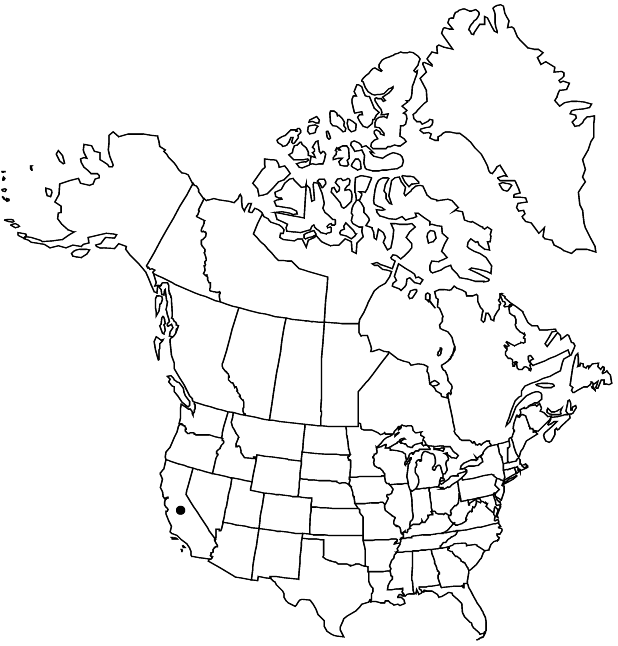Dudleya verityi
Cact. Succ. J. (Los Angeles) 55: 196, figs. 1–5, 7. 1983 ,.
Caudices branched apically, (cespitose), 2–10 × 0.2–1 cm, axillary branches absent. Leaves: rosettes 25–100+, in clumps, 6–10-leaved, 2–8 cm diam.; blade blue-green, oblong-lanceolate, 2–5 × 0.4–0.8 cm, 2–3 mm thick, base 0.5–0.8 cm wide, apex acute to acuminate, surfaces not farinose, glaucous. Inflorescences: cyme mostly 2–3-branched, obpyramidal; branches not twisted (flowers on topside), simple or 1–2 times bifurcate, (3–6 cm diam.); cincinni 1–3, 2–10-flowered, circinate, 2–5 cm; floral shoots 3–15 × 0.3–0.6 cm; leaves 5–20, ascending, lanceolate, 8–10 × 5–7 mm, apex acute. Pedicels ascending to erect, not bent in fruit, 3–5 mm. Flowers: calyx 4–5 × 5–7 mm; petals connate 1–2 mm, bright yellow with greenish midribs, 10–14 × 2.5–4 mm, apex sharply acute, tips outcurved; pistils connivent, erect. Unripe follicles erect. 2n = 34.
Phenology: Flowering late spring.
Habitat: North-facing volcanic rocks
Elevation: ca. 100 m
Distribution

Calif.
Discussion
Of conservation concern.
Dudleya verityi forms clumps to 4 dm in diameter and is known from near Mount Conejo in the Santa Monica Mountains; it is considered to be seriously threatened (California Native Plant Society, http://cnps.web.aplus.net/cgi-bin/inv/inventory.cgi). It hybridizes in nature with D. blochmaniae subsp. blochmaniae.
Selected References
None.